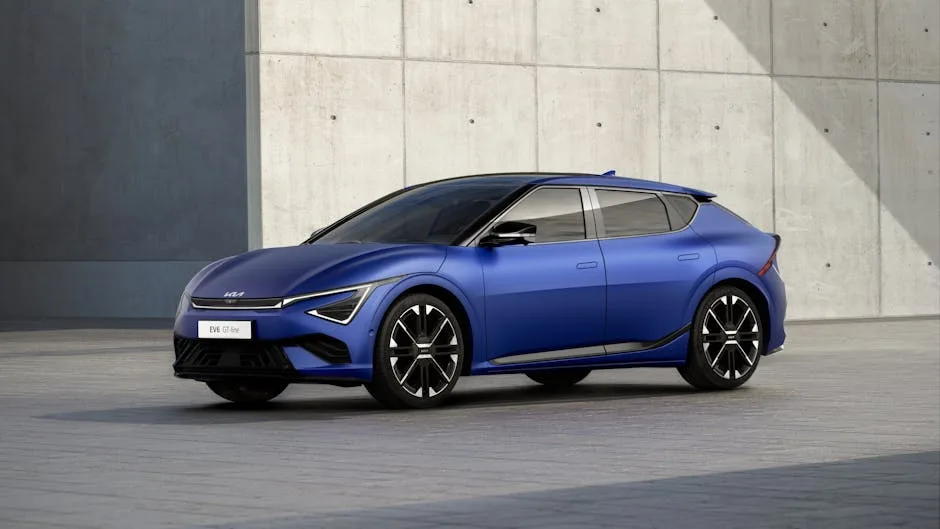
The global automotive industry is accelerating development of electric motors that eliminate dependence on Chinese rare earth elements, responding to growing geopolitical tensions and supply chain vulnerabilities. Major manufacturers including BMW, Renault, and General Motors are deploying or developing alternative motor technologies that avoid rare-earth permanent magnets entirely, according to recent industry reports and corporate announcements.6 This strategic shift comes as China tightens export controls on several rare earth elements and related technologies, creating significant supply chain risks for Western automakers.8
The urgency stems from China’s dominant position in the global rare-earth supply chain, controlling the majority of mining, processing, and magnet production. One industry observer noted the extreme vulnerability this creates, stating “They can shut us down in two months,” highlighting how quickly production could be disrupted by geopolitical events.8 This concentration of critical materials in one geopolitical sphere has prompted substantial investment in alternative technologies across North America, Europe, and Japan.
Alternative Motor Technologies Gaining Traction
Several technological approaches are emerging as viable alternatives to rare-earth permanent magnet motors. BMW has reached production readiness with a system combining Externally Excited Synchronous Motors on the rear axle with Asynchronous Motors on the front axle, completely eliminating the need for permanent magnets containing rare earth elements.6 This technology represents the German automaker’s sixth generation of electric drives and demonstrates that rare-earth-free solutions can achieve production viability in premium vehicles. The approach uses electromagnets rather than permanent magnets, allowing for variable magnetic fields that can optimize efficiency across different operating conditions.
Renault and Nissan are pursuing similar EESM technology, with Renault announcing in late 2023 a partnership with Valeo to develop more powerful and compact EV motors without rare earths.1 As of November 2025, Renault appears to be pursuing a dual-track strategy, reportedly seeking a Chinese supplier for rare-earth-free motors while maintaining Western partnerships.1 This suggests that while the technology is advancing rapidly, supply chain diversification remains a complex challenge requiring multiple approaches and partnerships across different regions.
Innovative Materials and Manufacturing Approaches
Beyond motor design changes, material science innovations are creating new possibilities for completely avoiding rare earth dependencies. Minnesota-based Niron Magnetics is developing high-performance permanent magnets using iron nitride, which contains no rare earths and reportedly offers 18% greater potency than conventional rare-earth magnets.3 The company has secured substantial backing from Stellantis, General Motors, Volvo Cars, and Samsung, along with significant government support including a $52.2 million tax credit and $17.5 million grant from the U.S. Department of Energy.3
Niron’s CEO Jonathan Rowntree emphasizes the strategic advantage of their approach: “Western rare earth companies are playing the Chinese at the same game. We don’t need to bring a mine online.”3 The company is building a 1,500-tonne-per-year factory in Sartell, Minnesota, targeting early 2027 for operation, which would meet approximately 3% of U.S. domestic magnet demand. This represents a significant step toward establishing independent North American supply chains for critical motor components.
Other innovators include Modal Motors, which has developed electric motors without rare-earth magnets that are highlighted as more durable and designed for full robotic assembly, improving manufacturability.4 The company is also receiving significant interest from drone manufacturers, suggesting applications beyond automotive. Academic institutions are contributing to this technological shift, with Texas A&M University developing a prototype using copper coils in the rotating part instead of rare earths, supported by approximately $500,000 in funding and plans to launch a startup for commercialization.7
Industry-Wide Adoption Challenges
Despite promising developments, significant challenges remain for widespread adoption of rare-earth-free motor technologies. Many alternative motors experience performance losses, higher costs, or other trade-offs compared to high-performance rare-earth permanent magnet motors.6 This creates commercial risk for automakers, as noted by Andy Leyland of SC Insights: “Investing in the development of electric motors without rare earths is commercially very risky. As long as cheap PSMs from China are on the market, it remains difficult for automakers to rely on rare-earth-free solutions.”6
The timeline presents another critical challenge, as most non-rare-earth motors and new mining projects remain years away from mass production.8 This creates a gap between immediate supply chain vulnerabilities and long-term solutions. Major automotive suppliers including BorgWarner, Mahle, Valeo, Schaeffler, and ZF are all developing various types of rare-earth-free electric motors, indicating broad industry recognition of the problem but also highlighting the fragmented nature of current solutions.6
Chinese companies including BYD and Huawei are also researching EESM technology, though primarily to reduce costs rather than for supply chain security.6 Indian companies Sterling Gtake E-Mobility and Sona Comstar are working on rare-earth-free motors and magnets to reduce reliance on Chinese imports, demonstrating that this technological shift has global momentum beyond Western markets.6
The transition away from rare-earth-dependent motors represents a fundamental restructuring of electric vehicle supply chains with significant implications for automotive manufacturing, international trade relationships, and national security considerations. While technical and commercial hurdles remain, the concerted effort across multiple continents and industry sectors indicates this shift is likely to accelerate as geopolitical tensions continue and alternative technologies mature. The success of these initiatives will determine the future resilience and independence of the global electric vehicle industry.
References
- “Renault seeking Chinese rare-earth-free motor supplier, sources say.” Reuters, 10 Nov. 2025.
- “Magnet-free electric motors improve EV efficiency.” Facebook, 19 Jul. 2025.
- “Stellantis, GM back firm building magnets without China’s rare-earth elements.” CryptoPolitan, 27 Sep. 2025.
- “Electric Motors w/o Rare-Earth Magnets & Can Be Fully Assembled by Robots – Battery Show 2025.” Autoline Network, 8 Oct. 2025.
- [Reference not used in article]
- “Plan B for E-Motors – Without China.” All-about-industries.com, 3 Nov. 2025.
- “From the USA electric motor without rare earths.” Electric Motor Engineering, 17 Feb. 2025.
- “‘They can shut us down in two months’: Carmakers race China’s rare…” The Japan Times, 21 Oct. 2025.





